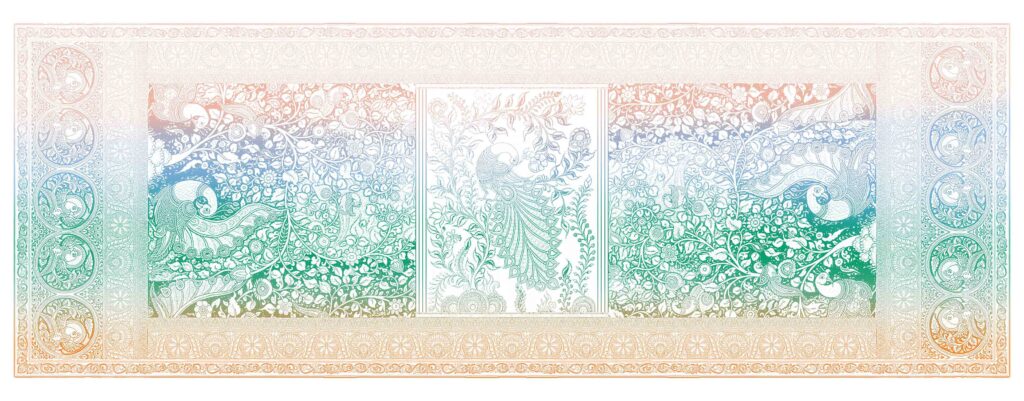A 2500-year-old art form that is still revived by the women in the Mithila region of India, it’s a craft that shows intricate craftsmanship and skills par excellence.

Paintings are the reflection of the cultural and traditional ethos of a place and time. Madhubani form of paintings, with its origins in Mithila region of Bihar, is famously known as Mithila art, mainly prevalent around areas of Bihar and Nepal. It’s an age old, almost 2500-year-old folk art tradition, that is still alive and serves as a source of livelihood for the women of this region.
The history of Madhubani paintings goes back to the Ramayana era. It is believed that King Janaka asked an artist to depict his daughter Sita’s wedding to Rama in the form of a beautiful art form. An integral part of auspicious occasions and celebrations, these paintings were done by women over the floors and walls of houses to add charm to the festivals and special ceremonies.
The painting representations and imagery
Nature and mythology as the themes noticed in these paintings. Events such as marriage, birth, cycle of life etc. form the core. Snakes, fish, bamboo grove, birds, lotus etc. are commonly seen as symbolic imagery in these paintings. These images represent the fertility of life. Primarily done over freshly plastered mud walls of huts, now these paintings are also seen over handmade paper, cloth and canvas.
The different variety of Madhubani paintings
Madhubani paintings fall into two categories:
1. Bhittichitra
2. Aripana.
Bhittichitra is done on the mud walls of houses, especially during some auspicious occasions like marriages, and festivities like Dussehra and Deepawali, to name a few. The paintings have Sun and Moon signifying prosperity and joy to the family.
Aripana is typically done on floors and includes figures like the lotus, conch shells, etc. Aripana is done on the eve of certain rituals or ceremonies such as Puja, Vrata, etc. These paintings are freshly created during the auspicious occasions and the places chosen are typically the main entrance, front door, courtyard space etc.
Discovery of this rich art form
These paintings were discovered in 1934 when a massive earthquake hit Bihar. While examining the damage caused by the earthquake, the British Colonial Officer, William Archer of the Madhubani district, came across these paintings on the interior walls of homes.
In the 1960s when drought-hit Bihar, the All India Handicrafts Board encouraged upper-caste women in villages around Madhubani town to make Madhubani paintings on paper to generate income. Gradually, this form of art gained popularity.
The technique, the colors, the unique features
The technique used to do these paintings is interesting and unique indeed! The typical use of twigs, matchsticks, fingers, and now even pen nibs is an interesting facet of this unique art form, giving it an individualistic charm! Bright colors characterize these paintings and rice paste is peculiarly seen as outlines. There are rarely any blank spaces in these paintings. Geometric and floral patterns adorn these paintings. Natural dyes are used for the paintings. E.g. use of charcoal, soot, turmeric, sandalwood, indigo etc.
The integral topics of these paintings
Women are working towards keeping this art form alive and are ably reviving it in modern times with their unique talent and rich cultural legacy. Be it women empowerment, education, or raising issues of societal concern, women use this form of art to reiterate their prominent role in society, garner respectful and worthy positions in society, and touch upon other important issues of societal concern. The subjects are vast, ancient folklore, trending topics of concern, the visual portrayal is done rather amazingly, artistically, and intriguingly!
This rich art form is a symbol of pride! A versatile art form that’s been around for decades and will adorn the Indian tradition for generations to come!